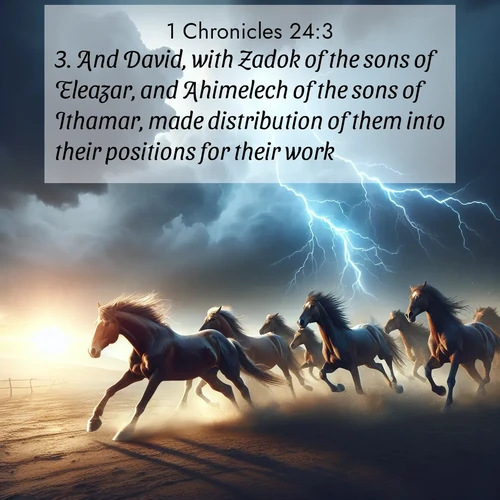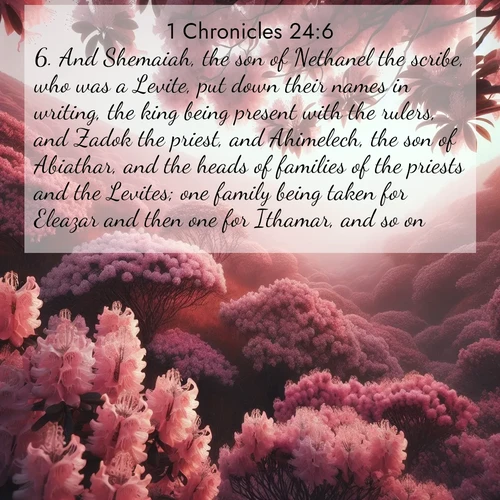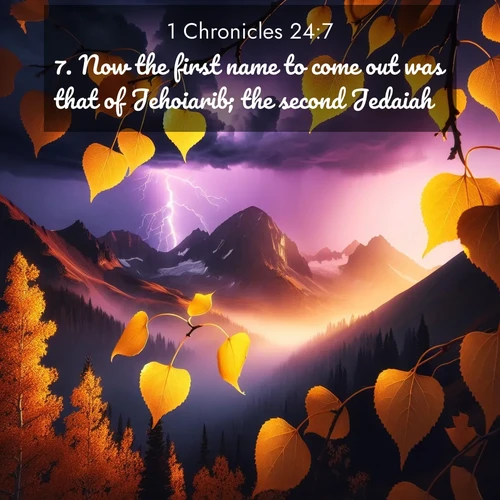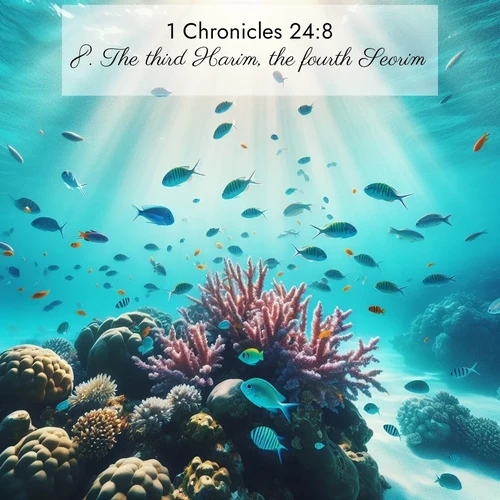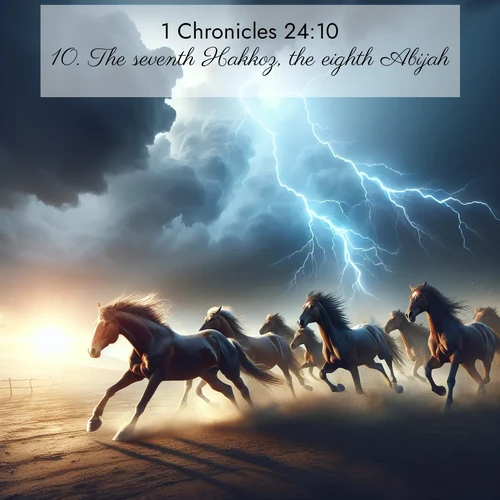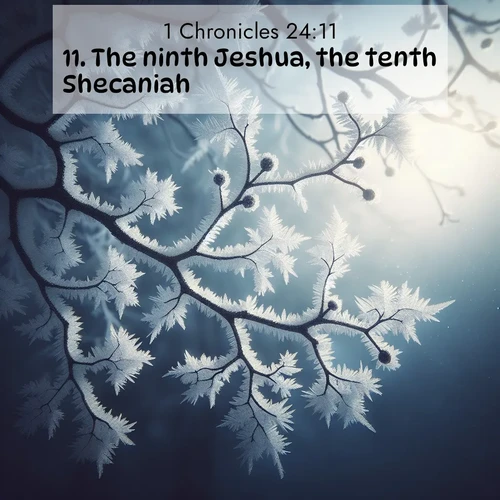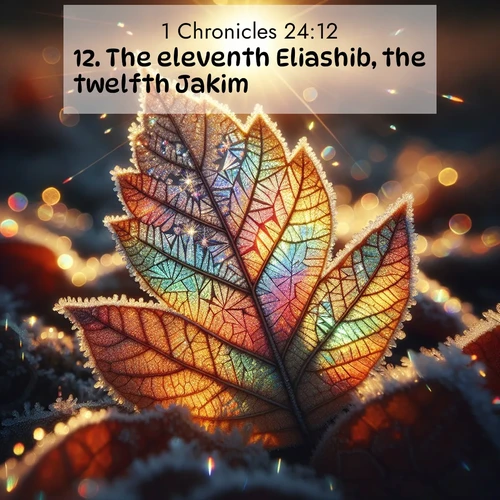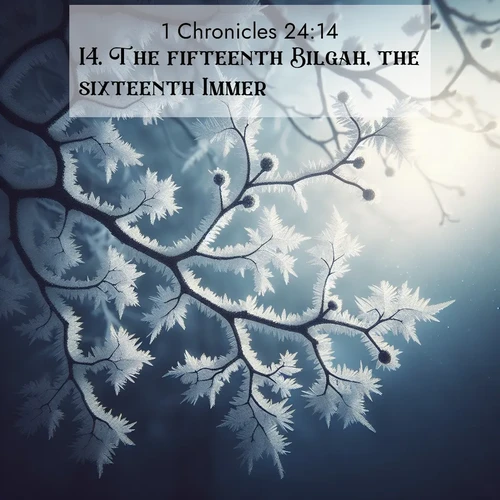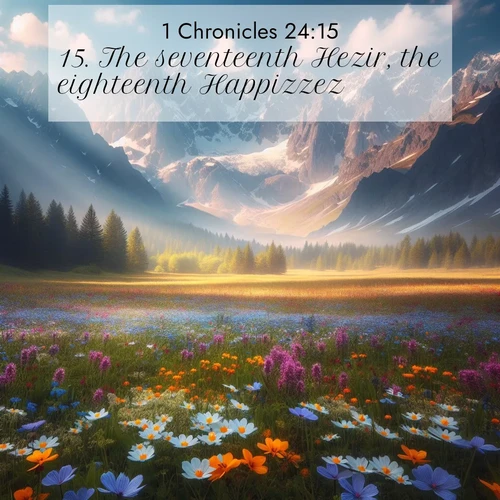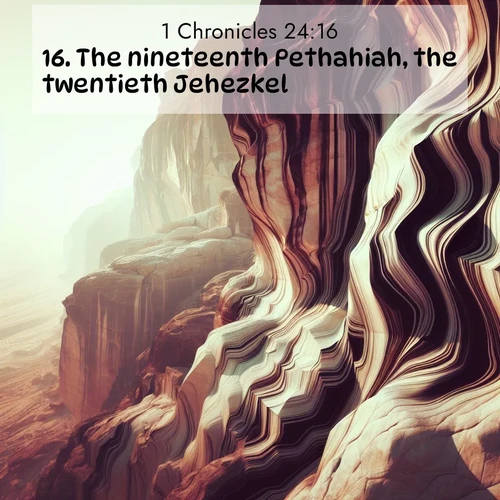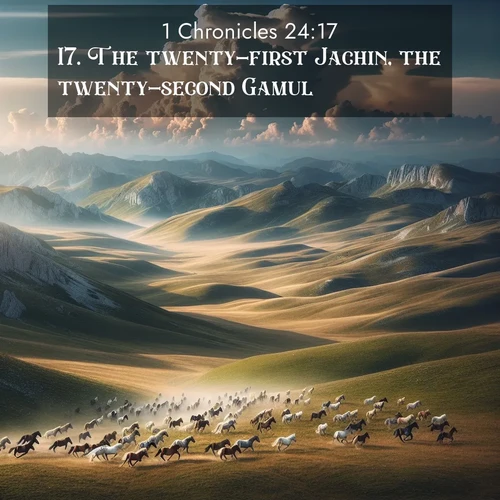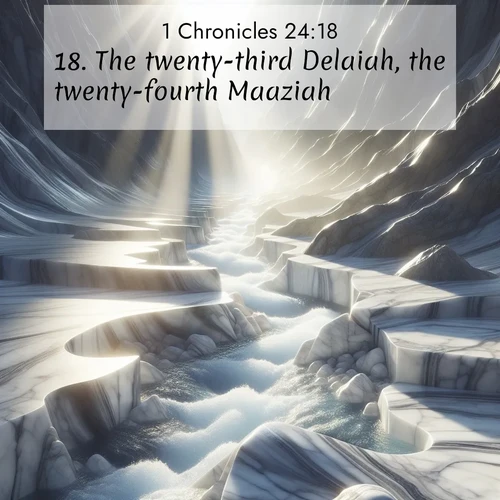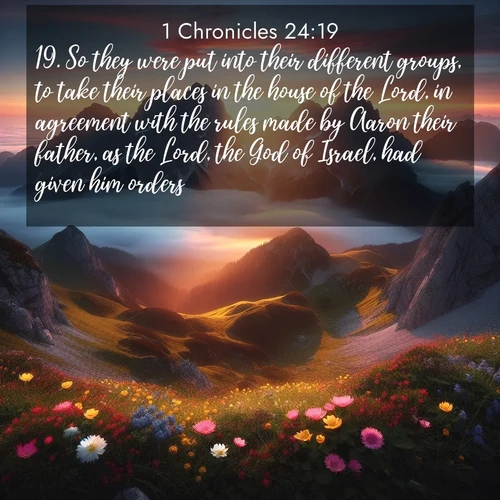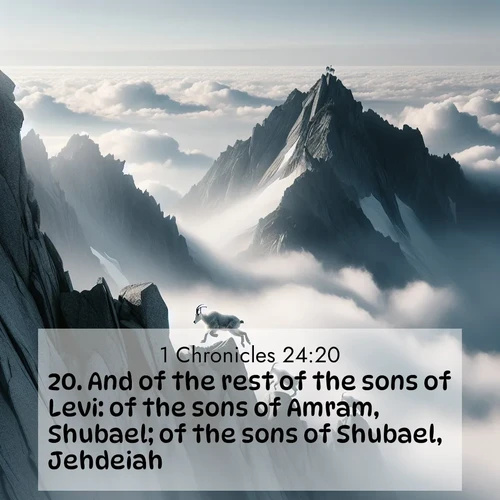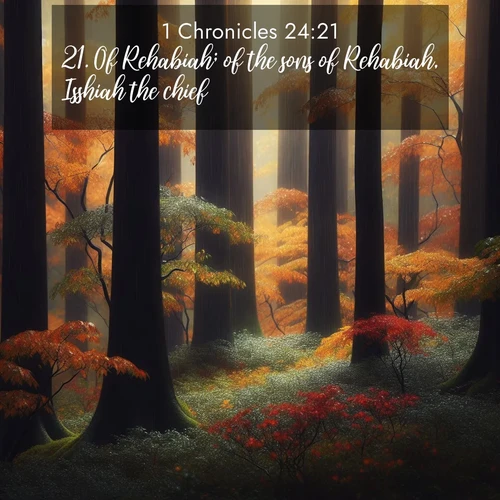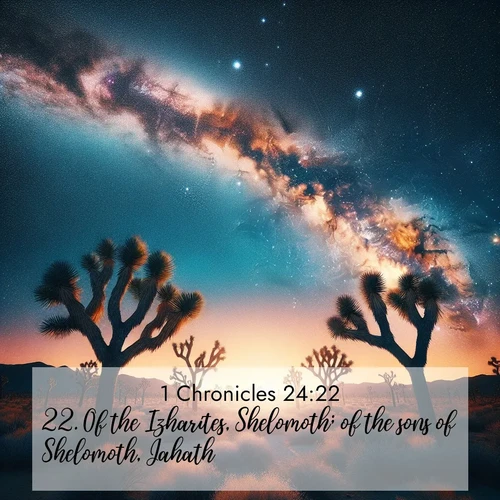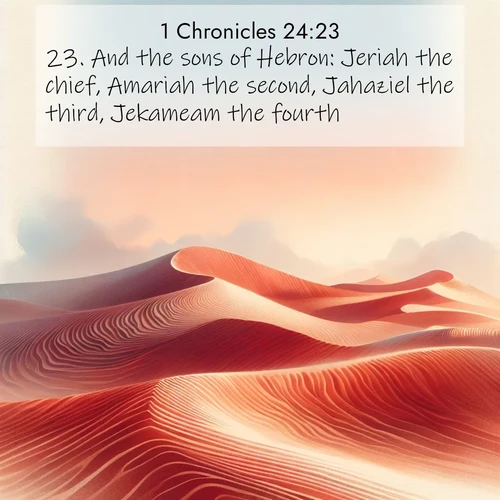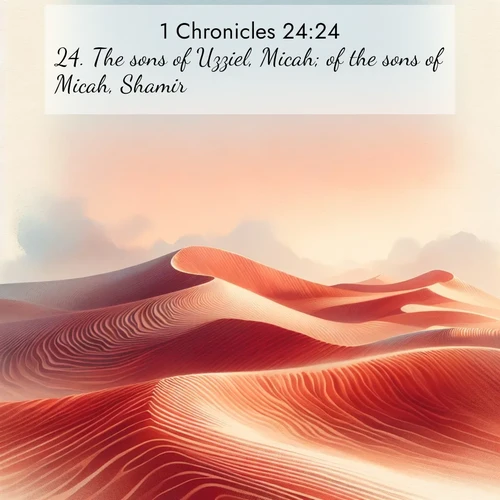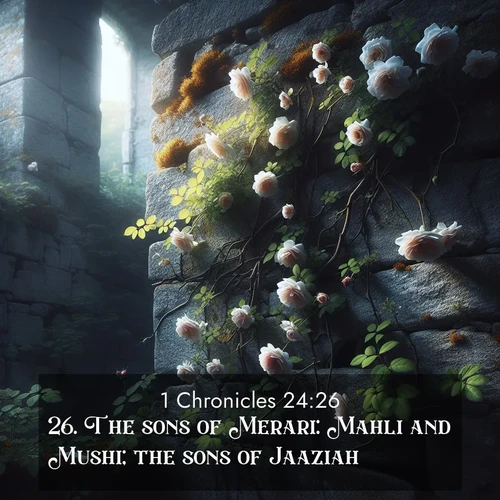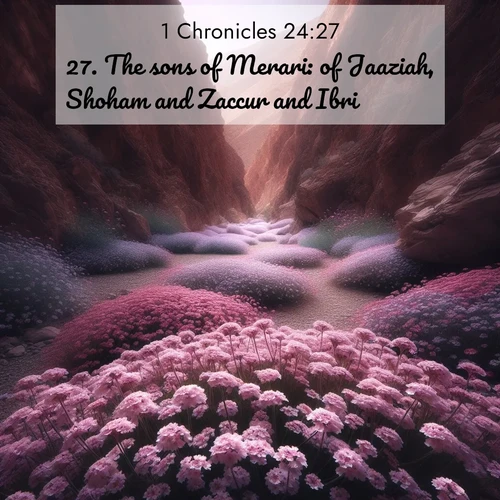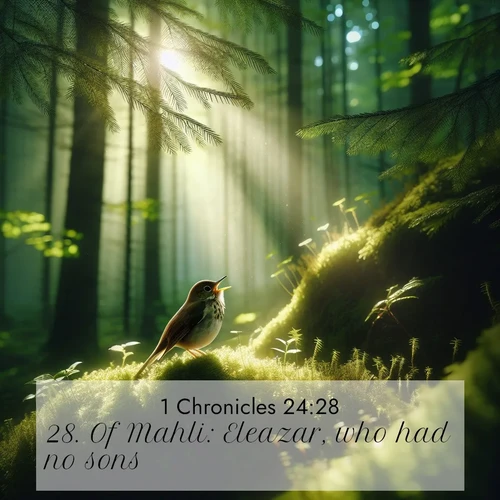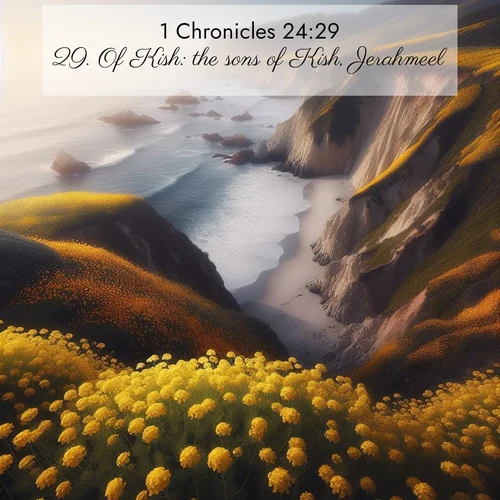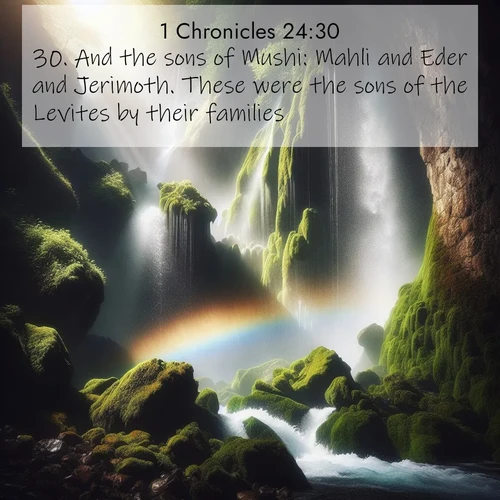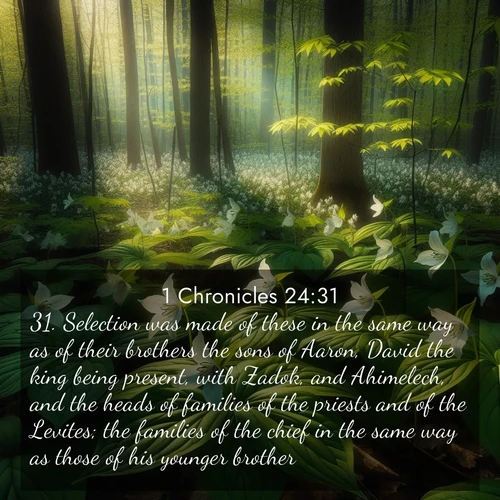Basic English Bible Images: Beautiful Images of 1 Chronicles Chapter 24 Verses
1 Chronicles 24:1. Now the divisions into which the sons of Aaron were grouped were these: the sons of Aaron, Nadab and Abihu, Eleazar and Ithamar.
Read the verse in its context:
Basic English 1 Chronicles 24
1 Chronicles 24:2. But Nadab and Abihu came to their end before their father, and had no children; so Eleazar and Ithamar did the work of priests.
Read the verse in its context:
Basic English 1 Chronicles 24
1 Chronicles 24:3. And David, with Zadok of the sons of Eleazar, and Ahimelech of the sons of Ithamar, made distribution of them into their positions for their work.
Read the verse in its context:
Basic English 1 Chronicles 24
1 Chronicles 24:4. And there were more chiefs among the sons of Eleazar than among the sons of Ithamar; and this is how they were grouped: of the sons of Eleazar there were sixteen, all heads of families; and of the sons of Ithamar, heads of families, there were eight.
Read the verse in its context:
Basic English 1 Chronicles 24
1 Chronicles 24:5. So they were put into groups, by the Lord's decision, one with another; for there were rulers of the holy place and rulers of the house of God among the sons of Eleazar and the sons of Ithamar.
Read the verse in its context:
Basic English 1 Chronicles 24
1 Chronicles 24:6. And Shemaiah, the son of Nethanel the scribe, who was a Levite, put down their names in writing, the king being present with the rulers, and Zadok the priest, and Ahimelech, the son of Abiathar, and the heads of families of the priests and the Levites; one family being taken for Eleazar and then one for Ithamar, and so on.
Read the verse in its context:
Basic English 1 Chronicles 24
1 Chronicles 24:7. Now the first name to come out was that of Jehoiarib; the second Jedaiah,
Read the verse in its context:
Basic English 1 Chronicles 24
1 Chronicles 24:8. The third Harim, the fourth Seorim,
Read the verse in its context:
Basic English 1 Chronicles 24
1 Chronicles 24:9. The fifth Malchijah, the sixth Mijamin,
Read the verse in its context:
Basic English 1 Chronicles 24
1 Chronicles 24:10. The seventh Hakkoz, the eighth Abijah,
Read the verse in its context:
Basic English 1 Chronicles 24
1 Chronicles 24:11. The ninth Jeshua, the tenth Shecaniah,
Read the verse in its context:
Basic English 1 Chronicles 24
1 Chronicles 24:12. The eleventh Eliashib, the twelfth Jakim,
Read the verse in its context:
Basic English 1 Chronicles 24
1 Chronicles 24:13. The thirteenth Huppah, the fourteenth Jeshebeab,
Read the verse in its context:
Basic English 1 Chronicles 24
1 Chronicles 24:14. The fifteenth Bilgah, the sixteenth Immer,
Read the verse in its context:
Basic English 1 Chronicles 24
1 Chronicles 24:15. The seventeenth Hezir, the eighteenth Happizzez,
Read the verse in its context:
Basic English 1 Chronicles 24
1 Chronicles 24:16. The nineteenth Pethahiah, the twentieth Jehezkel,
Read the verse in its context:
Basic English 1 Chronicles 24
1 Chronicles 24:17. The twenty-first Jachin, the twenty-second Gamul,
Read the verse in its context:
Basic English 1 Chronicles 24
1 Chronicles 24:18. The twenty-third Delaiah, the twenty-fourth Maaziah.
Read the verse in its context:
Basic English 1 Chronicles 24
1 Chronicles 24:19. So they were put into their different groups, to take their places in the house of the Lord, in agreement with the rules made by Aaron their father, as the Lord, the God of Israel, had given him orders.
Read the verse in its context:
Basic English 1 Chronicles 24
1 Chronicles 24:20. And of the rest of the sons of Levi: of the sons of Amram, Shubael; of the sons of Shubael, Jehdeiah.
Read the verse in its context:
Basic English 1 Chronicles 24
1 Chronicles 24:21. Of Rehabiah; of the sons of Rehabiah, Isshiah the chief.
Read the verse in its context:
Basic English 1 Chronicles 24
1 Chronicles 24:22. Of the Izharites, Shelomoth; of the sons of Shelomoth, Jahath.
Read the verse in its context:
Basic English 1 Chronicles 24
1 Chronicles 24:23. And the sons of Hebron: Jeriah the chief, Amariah the second, Jahaziel the third, Jekameam the fourth.
Read the verse in its context:
Basic English 1 Chronicles 24
1 Chronicles 24:24. The sons of Uzziel, Micah; of the sons of Micah, Shamir.
Read the verse in its context:
Basic English 1 Chronicles 24
1 Chronicles 24:25. The brother of Micah, Isshiah; of the sons of Isshiah, Zechariah.
Read the verse in its context:
Basic English 1 Chronicles 24
1 Chronicles 24:26. The sons of Merari: Mahli and Mushi; the sons of Jaaziah.
Read the verse in its context:
Basic English 1 Chronicles 24
1 Chronicles 24:27. The sons of Merari: of Jaaziah, Shoham and Zaccur and Ibri.
Read the verse in its context:
Basic English 1 Chronicles 24
1 Chronicles 24:28. Of Mahli: Eleazar, who had no sons.
Read the verse in its context:
Basic English 1 Chronicles 24
1 Chronicles 24:29. Of Kish: the sons of Kish, Jerahmeel.
Read the verse in its context:
Basic English 1 Chronicles 24
1 Chronicles 24:30. And the sons of Mushi: Mahli and Eder and Jerimoth. These were the sons of the Levites by their families.
Read the verse in its context:
Basic English 1 Chronicles 24
1 Chronicles 24:31. Selection was made of these in the same way as of their brothers the sons of Aaron, David the king being present, with Zadok, and Ahimelech, and the heads of families of the priests and of the Levites; the families of the chief in the same way as those of his younger brother.
Read the verse in its context:
Basic English 1 Chronicles 24
The images of Bible verses are created starting from the verses in the Basic English Bible and are made vailable freely for download and use. A link to our website is appreciated to let others know about this free image library. The Bible in Basic English was created in the 1940s by S.H. Hooke, an English language scholar. He wanted to make the Bible accessible to people with limited English, those learning it as a second language, and those with low literacy. To achieve this, he used a simplified vocabulary of just 850 common words, with minimal grammar. This made the text easier to understand, though some argue it loses some of the poetry and nuance of the original. Despite this, it has been praised for its clarity and continues to be used today by many, particularly in education and evangelism. Lausanne AB church is pleased to freely provide the images.
NOTE: the images are free to use and share. Please include a link to our site to help others find this resource.



